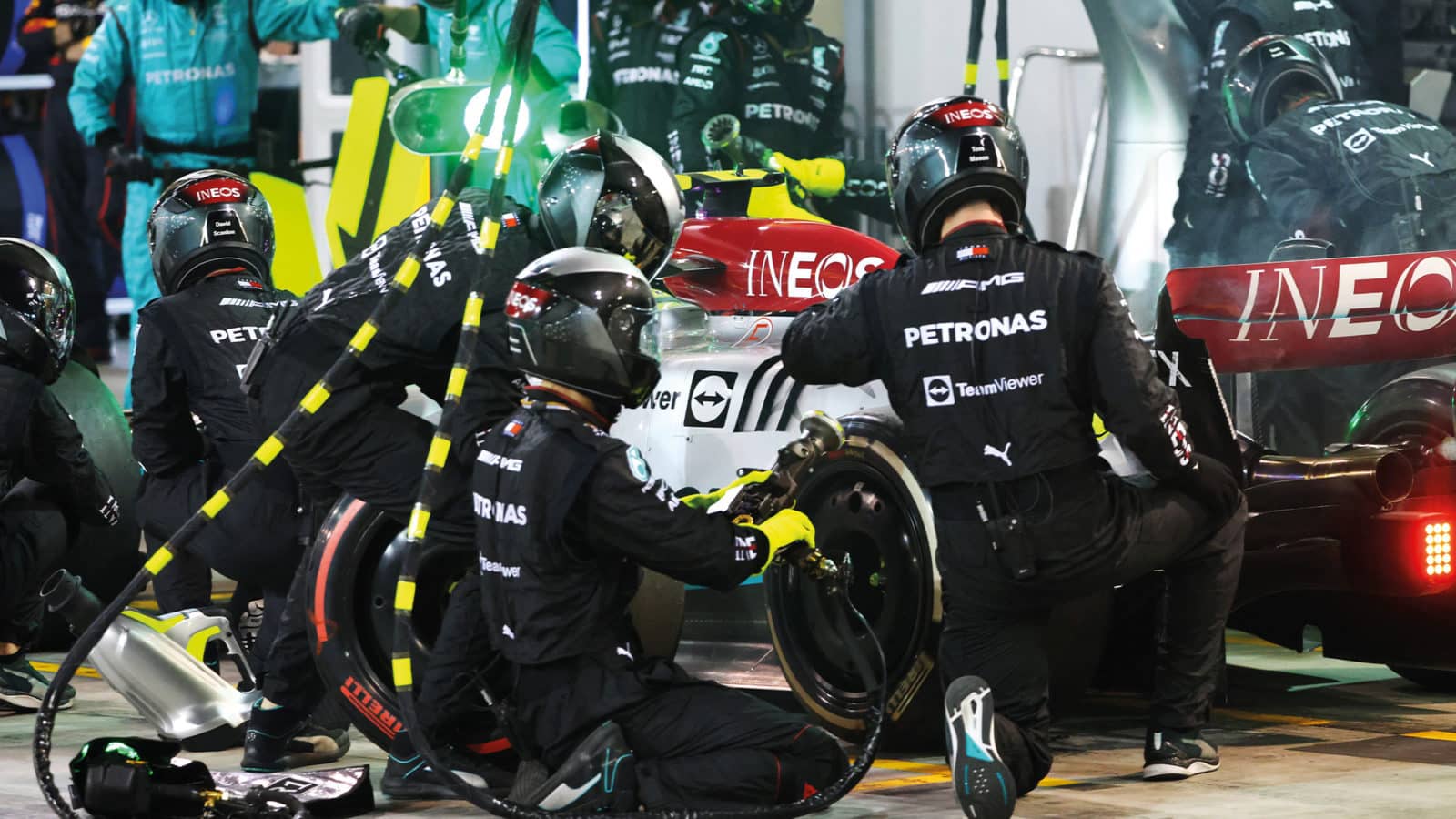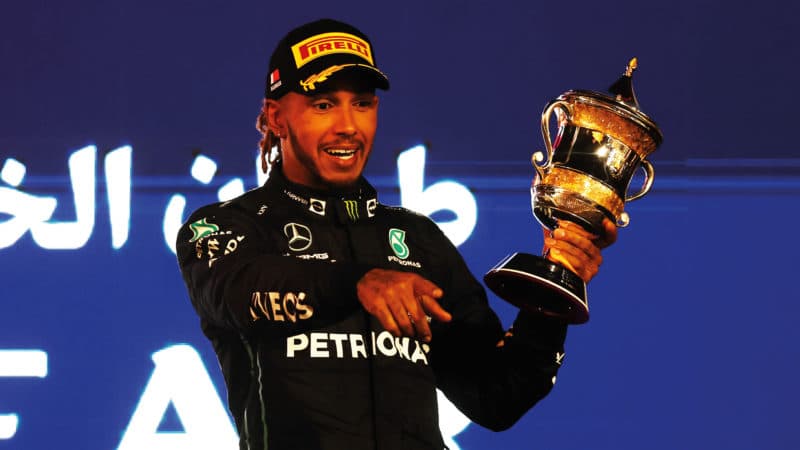Mercedes gambling with a poor hand
Well adrift of its rivals in the Bahrain race, Mercedes chose to try something brave – but its hand didn't play as expected

Mercedes found itself off the pace for the first time in many years at Bahrain, and before the Pierre Gasly-induced late safety car Lewis Hamilton and George Russell had been set to finish over a minute adrift of Charles Leclerc’s winning Ferrari.
The fact that it was in a competitive no-man’s land well adrift of Ferrari/Red Bull ahead and well clear of the fastest midfield teams Haas and Alfa Romeo at least allowed it a certain strategic flexibility. There was no particular downside to trying something bold. Mercedes did so by bringing both cars in early for a set of the hard C1 tyres, a compound that only four other drivers even tried. It was a difficult tyre, probably a little too hard for the demands of the track on the day.
The switch was made after the soft C3 compound they had each started on began to degrade faster than those on the cars ahead of them. In the early laps Hamilton had been able to hang onto the Ferrari of Carlos Sainz and run ahead of Sergio Pérez’s Red Bull. But after about six laps the pace began to fall off quite dramatically.

Lewis was lucky to inherit third after Merc’s bold tyre strategy went flat
The Merc’s relative lack of downforce to those cars and its greater propensity to porpoise clearly stressed the tyres more. Just as Pérez was poised to catch and pass Hamilton, Mercedes brought him in and made the switch. This was lap 11 of a 57-lap race. Russell was brought in four laps later.
At this stage of the race it was expected that everyone would be employing a two-stop strategy. The thinking at Mercedes was if they could do a very long middle stint on the hard, they would be able to get onto a faster tyre than everyone else was changing to for the last stint and could maybe pick off some tyre-strugglers from the group ahead.
It was a plan that depended heavily on the hard tyre allowing them to lap at least respectably quickly. It just didn’t work out like that. Hamilton almost lost the car under acceleration on his out-lap, so drastic was the lack of grip. It then took four laps to get them up to temperature. In the meantime he had lost around 6-7sec from what had been expected. Suffered the same difficulties in free practice 1 on Friday, Russell had tried a set and had suffered no problems getting it straight up to temperature and it was on that basis that the gamble on race day was made. But the 3-4°C difference in track temperature – and the increasing of Pirelli’s minimum pressure into Saturday – seemed to have made the crucial difference.
“The Mercedes gamble was rendered moot by the safety car”
The gamble didn’t cost Mercedes any positions it wasn’t going to lose anyway – i.e. Pérez passing Hamilton. But it did lose them some time and both drivers were switched to the C2 medium tyres after relatively short stints on the hards. Hamilton was from that point on a planned three-stop, Russell on a two. Hamilton was 16sec ahead and would have rejoined from his third stop around 8sec behind the two-stopping Russell on a set of softs with 12 laps to go. He would likely have caught and passed his team mate, given the probable tyre performance difference. But that was all rendered moot by the safety car which obliged everyone to be on a three-stop so as to not be mugged on the restart by new-tyred cars. In this way Mercedes didn’t actually need to manage things between their two cars.
